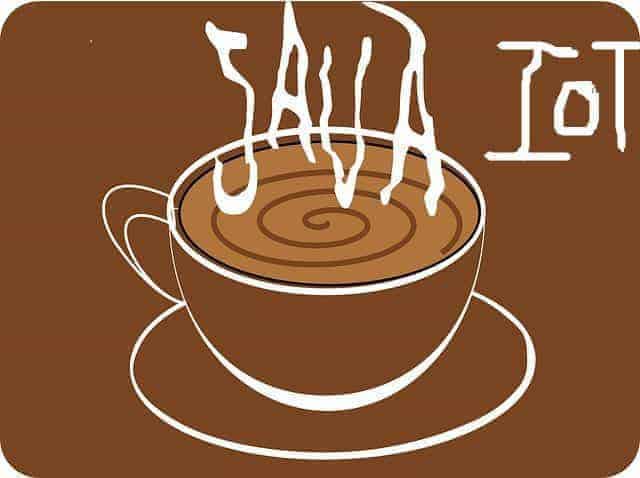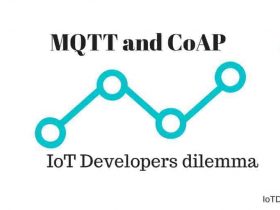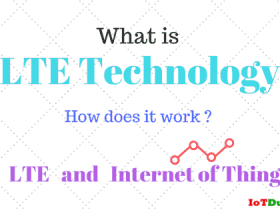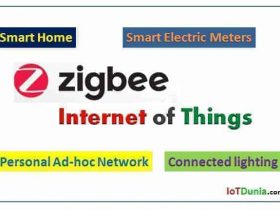Introduction to Java IoT
We know about Java and Internet of things Individually. Here we will Java for IoT, through out this article we called Java for IoT as Java IoT.
Brief about IoT
IoT (Internet of Things) or we can say M2M (Machine to Machine) is a smart network which is use for communications of devices with each other.
The devices can be any right from home (fridge, AC, bulbs, roomheaters, etc. ) to Jet Engines , Industrial plants. The network is very complex and different protocols are used for communications.
Let’s start with an example (watch the video below):
For e.g a person is driving a car after few hours an alert is generated by engine, he don’t know how serious is the problem. Whether it requires an immediate repair or it required servicing. The IoT plays a vital role here.
The different parts of cars like engine, brakes, tires, etc. are connected to bus and it sends its health status to manufacturer.
Here Car is connected to Manufacturer’s platform through gateways for security reasons. Data sharing, analyzing, takes place at manufactures side, if any problem is there it gives solutions and help you to reach your destination safely. IoT is not only useful for customers but also for industrial world to find the defects in design and sorting out the problem.
See also: Introduction to IoT – Explain IoT meaning in details
Applications of IoT
- Health Care
- Agriculture
- Transportations
- Home Automations
- Industrial for maintenance of products
- Energy Conservation
- Supply Chain & Logistics
See also: IoT Application sector in details
Why use Java for IoT i.e Java for IoT developers
According above bar graph survey did by to “Ian Skerrett – Marketing at Eclipse ” Java is leading technology in IoT.
According to given report by Oracle, one of Java’s biggest advantage is the robustness of application code.
C uses the explicit pointers to reference memory, all object references in Java are implicit pointers which cannot be manipulated by application code. This rules out potential issues such as memory access violations that can inevitably cause an application to stop all of a sudden.
While transferring applications written in C to a new platform could be both costly and time consuming, as well as which includes error , one more advantage of Java is that it runs anywhere after it’s been written once.
If the APIs used by the application remain unchanged, it is just a thing of redeploying the existing class or JAR files. A simple recompile will be good if you want to move to a newer version
of Java.
Advantages of IoT with Java
- One of the main uses of Java was to help connect home-entertainment devices, and this basic tenet of interoperability is what makes the platform a good fit for connected devices in IoT ecosystem.
- It has good functionality for resource constrained devices, with the high level of functionality, security, connectivity and scalability in the industry.
- As an open standard platform, Java is providing code portability for IoT environments, reducing time to market as new generations of sensor technology.
- It is highly secure in market device for software updates further extending product lifecycles and allowing new services to be handled remotely.
- Java has a huge ecosystem of millions Java developers worldwide who are developing applications and finding new ways for the connected world.
- By using java in devices makes it easier for product engineering as one can have good teams with java experience to work on programs that run on devices and backend servers instead of managing teams with specialized expertise in variety of development languages and environments for various devices.
- When one develops an embedded application one has to think about many things like the processor, the real-time operating system, and the different protocols that will be connected.
- Java ME abstracts all of that, so that when creating an application, it can run across the many different devices without need to change how those applications are written. The application is written once and can be prototyped on different types of hardware platform, so when one wants to migrate from one environment or system, the developer can use the same software on a different chip set or operating system.
- For instance when you code your application and do your prototyping on different devices like Raspberry Pi or Edison board then you can do the similar on a small microcontroller device. The same application which runs on the higher-end systems also runs on the low-cost devices. Security is a
major problem in the wirelessly connected world. - The Generic Connection Framework 8 (GCF 8) Access Point API in Java provides the latest security standards and the highest levels of networked encryption and authentication to ensure data privacy.
- We are adopting very early in sectors like healthcare with Java Embedded showing up in lifestyle health devices, patient monitoring technologies and home healthcare. The auto industry is also using Java Embedded-enabled IoT sensors and devices. These devices are increasingly being deployed for multiple use right from fleet management and logistics to pushing offers to rental car drivers and much more.
Finally I can say, Java IoT can reduce costs, drive innovation, and improve application services as the programming language of choice for IoT, enterprise architecture, and cloud computing.
Now days ,Java IoT is getting first choice for most of the IoT developers.
Now if you want to start IoT with IoT that we call Java IoT , follow the following steps
Getting Started with IoT & Role of Eclipse in IoT
Requirements:
Step 1) JVM (Java JDK SE 8 or Open JDK 8)
Step 2) Eclipse IDE
Step 3) Kura Workspace setup
Step 1 & 2 can be found on https://wiki.eclipse.org/Eclipse/Installation
Step 3) Kura Workspace setup can be found on
http://eclipse.github.io/kura/doc/kura-setup.html
Want to know more about java IoT refer following references
Useful Links/References
https://iot.eclipse.org/
https://blog.benjamin-cabe.com/2015/10/25/eclipse-iot-at-javaone-2015
http://www.pcquest.com/role-of-java-in-internet-of-things/
https://www.oracle.com/java/
Let us know your comment about IoT with Java for IoT developers in the comment section below.
If you like this post subscribe our YouTube Channel for IoT video Tutorials. You can also find us on Twitter, Facebook, and Instagram for more updates.
Start your IoT journey with IoT Basics from IoTDunia.














1 Review